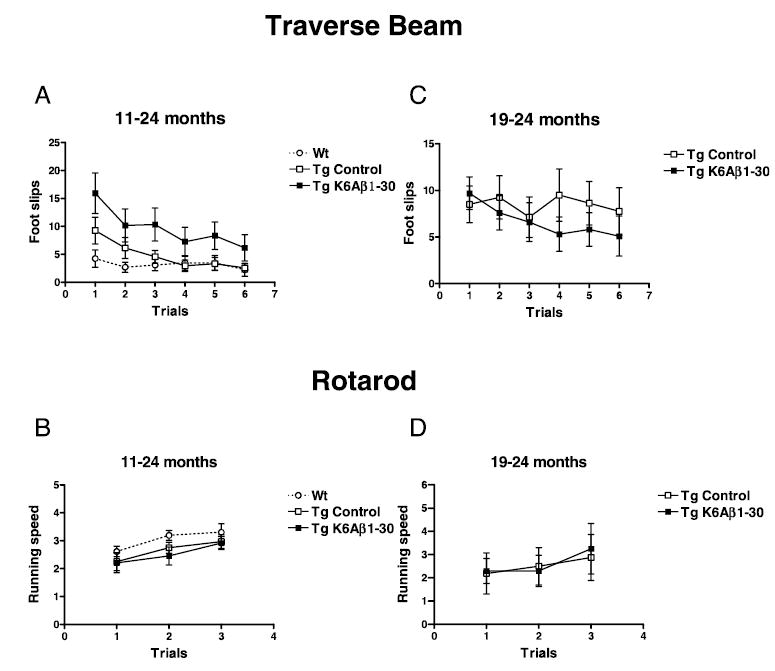Fig. 7.

Traverse beam and rotarod. (A) 11–24 months. The animals differed in their performance on the traverse beam (P < 0.05, Tg K6Aβ1–30 vs. Wt, P = 0.03). As expected, the mice had fewer foot slips with more trials (P < 0.0001) and the improvement was group dependent (treatment × trials P = 0.0003). (B) 11–24 months. No group differences were observed but the animals’ performance on the rotarod improved over time as expected (P = 0.0003). (C) 19–24 months. No differences were observed between the Tg groups in their performance on the traverse beam but there was a strong overall trend for significantly fewer foot slips with more trials (P = 0.06). (D) 19–24 months. No group differences were observed on the rotarod but the animals’ performance improved over time as expected (P = 0.0023).
